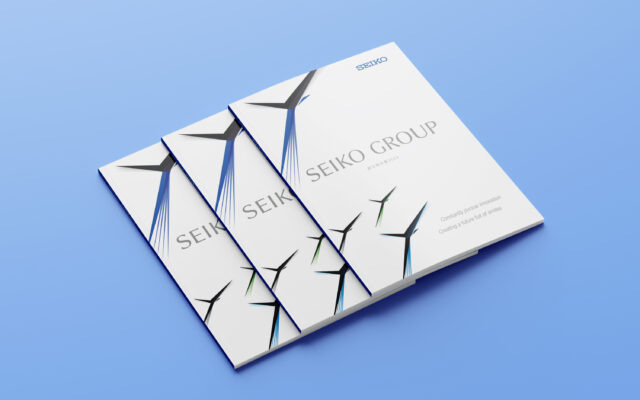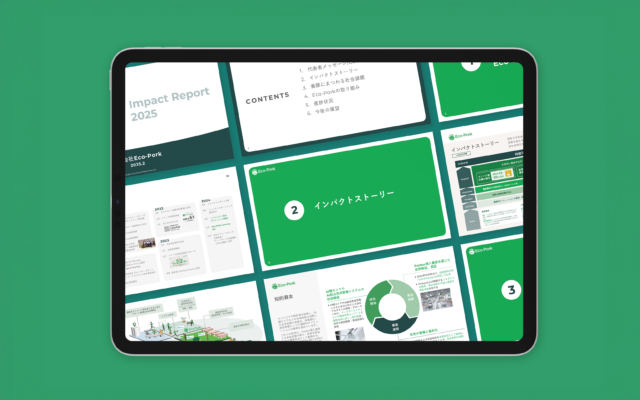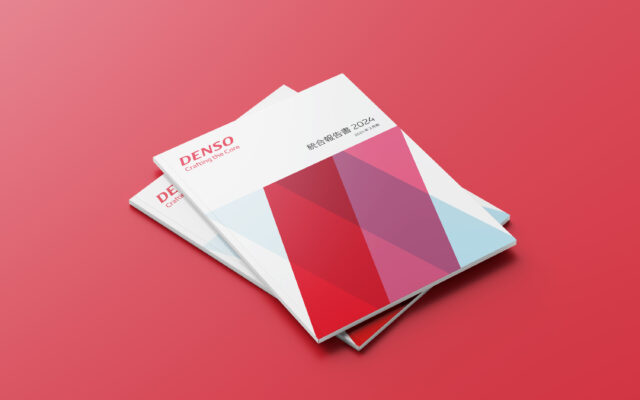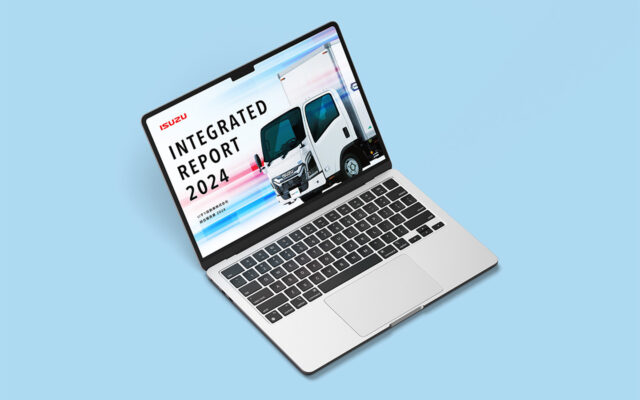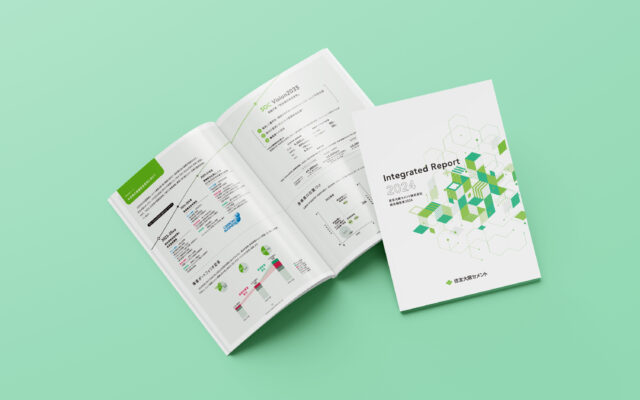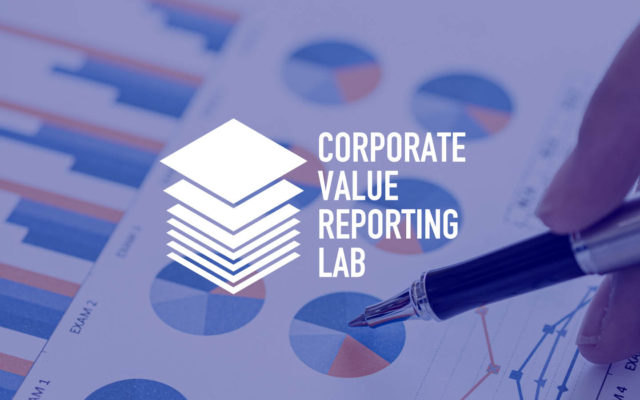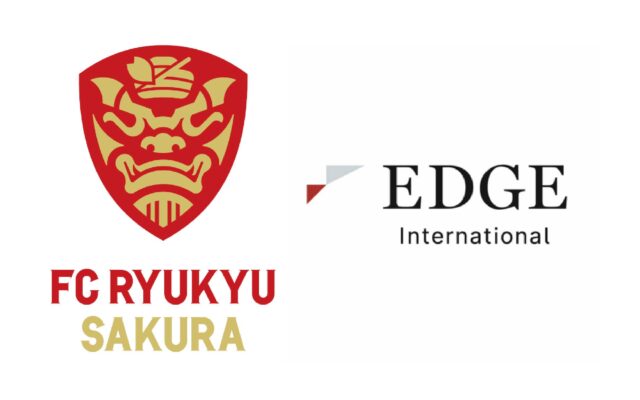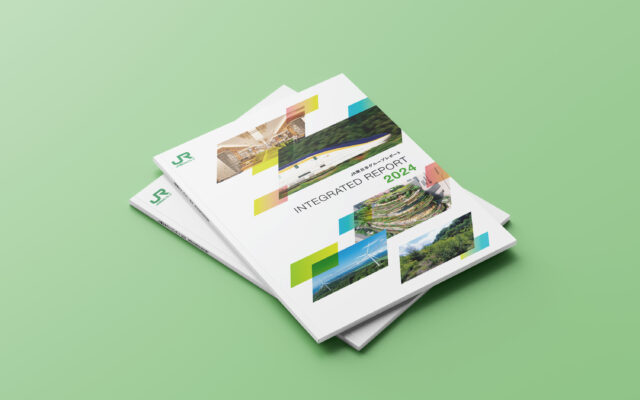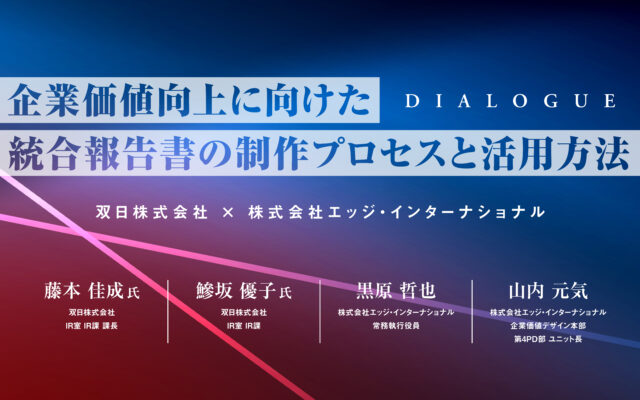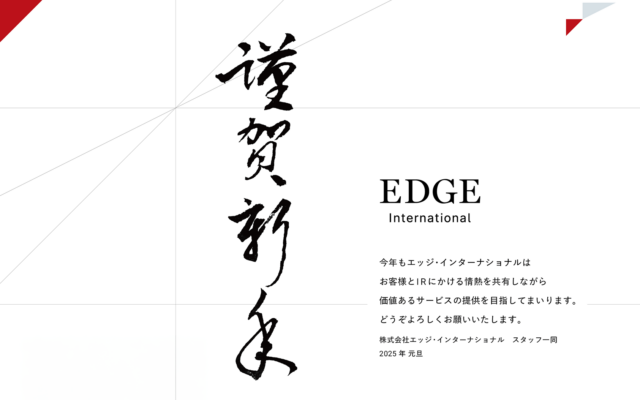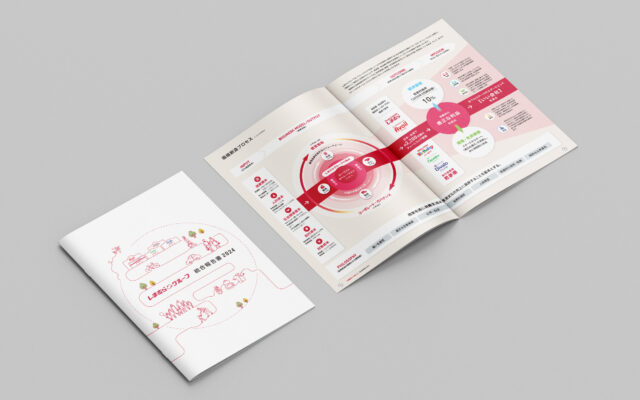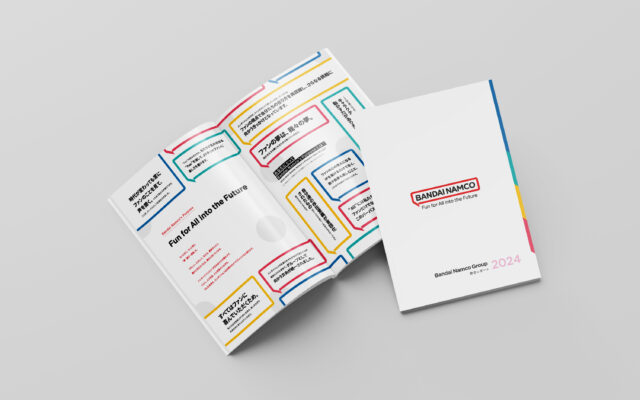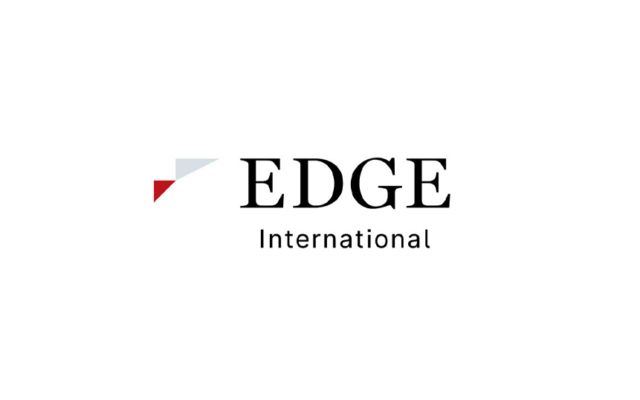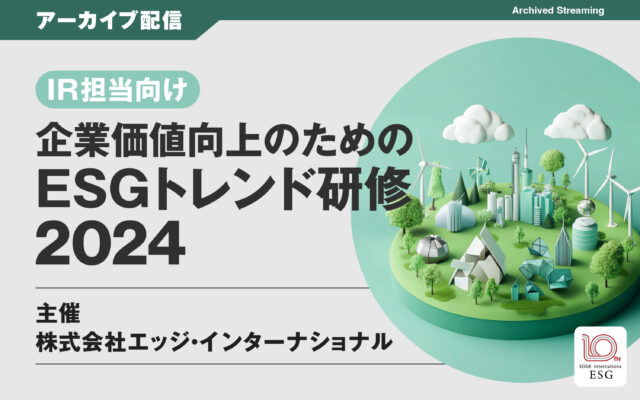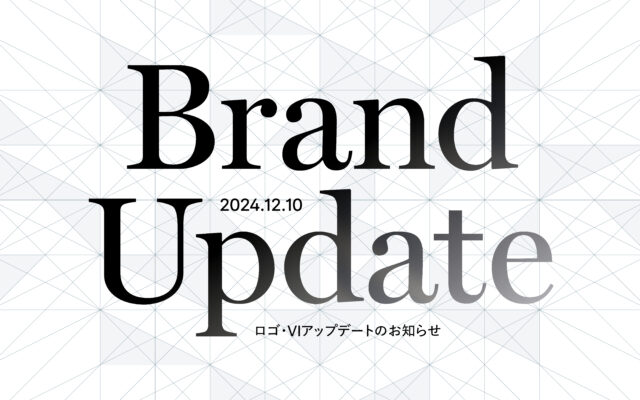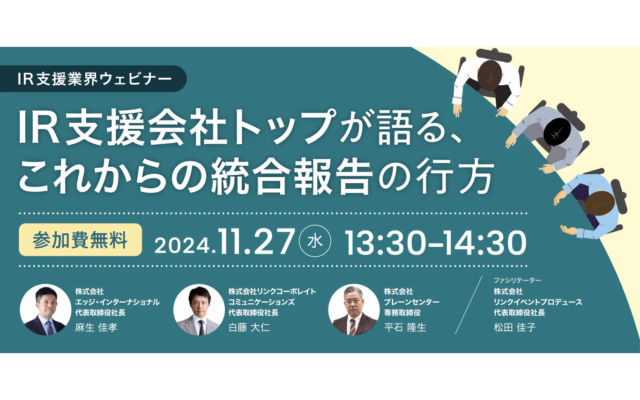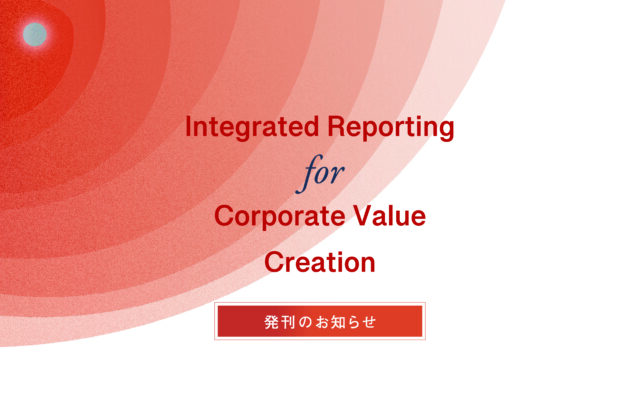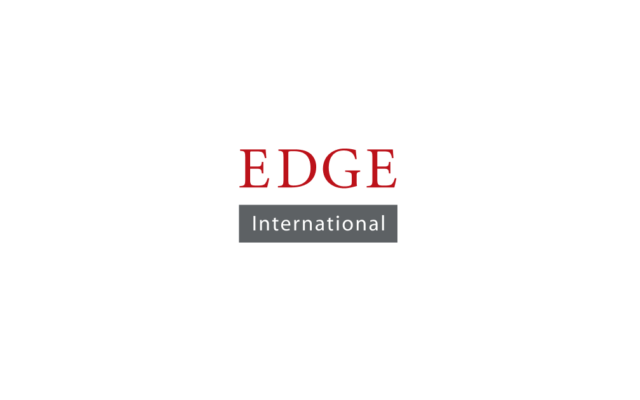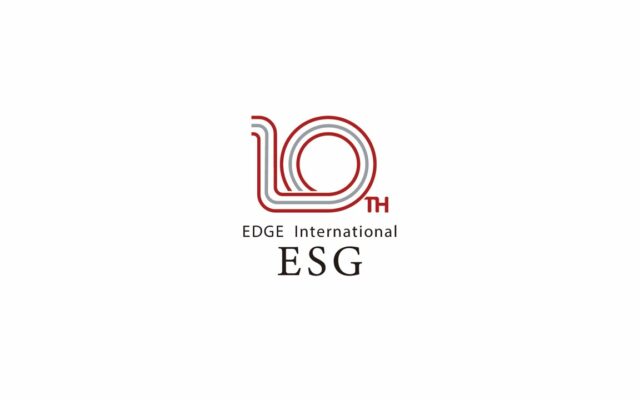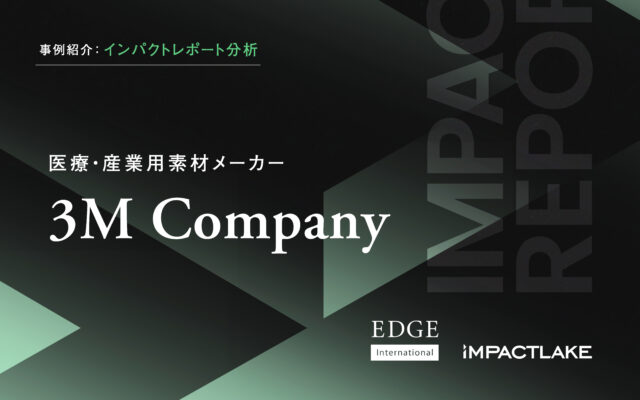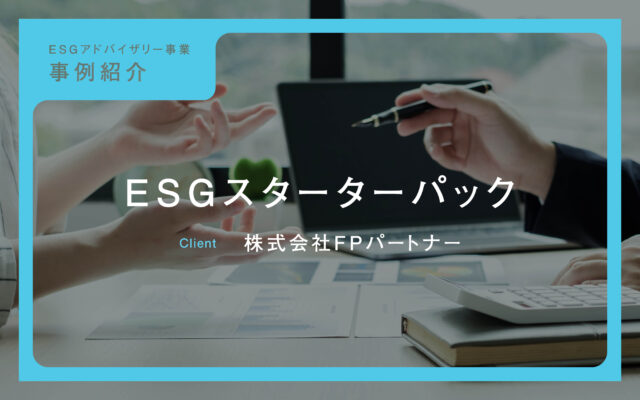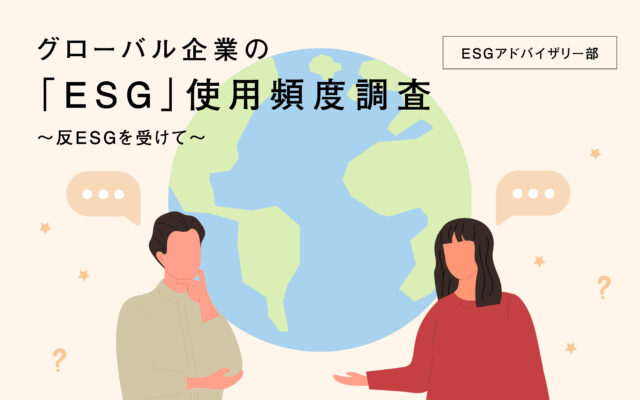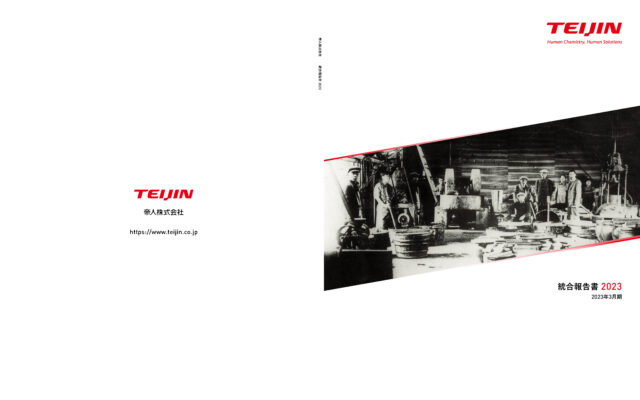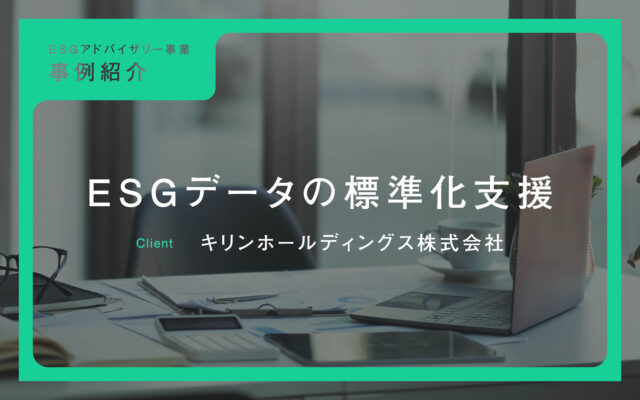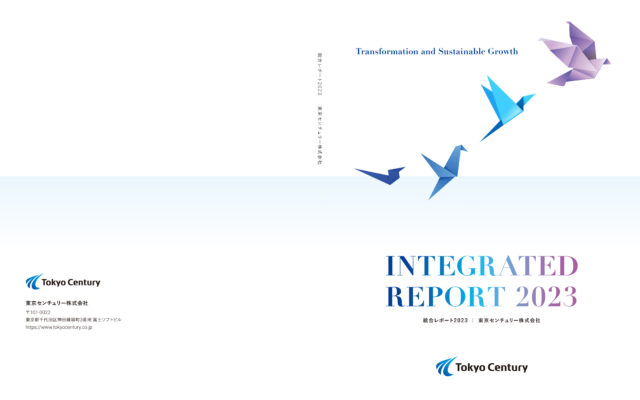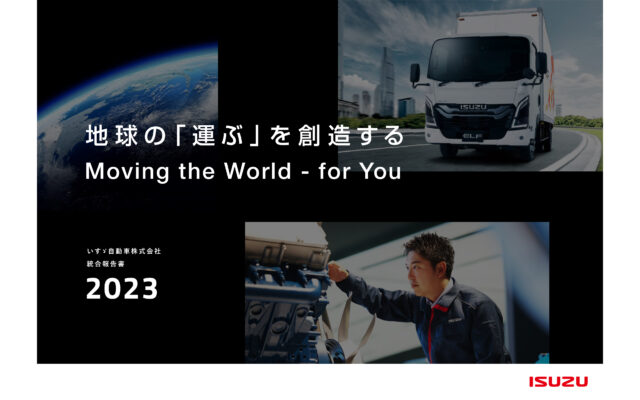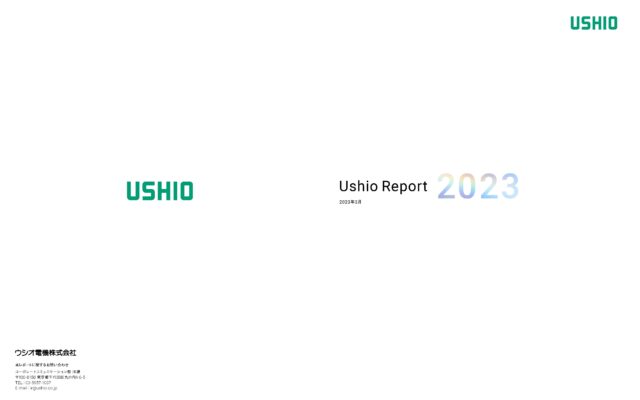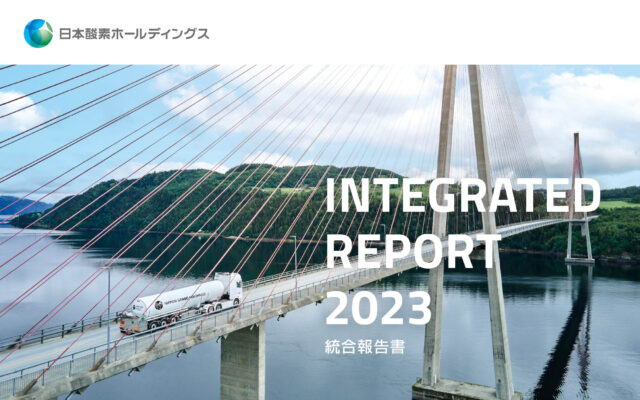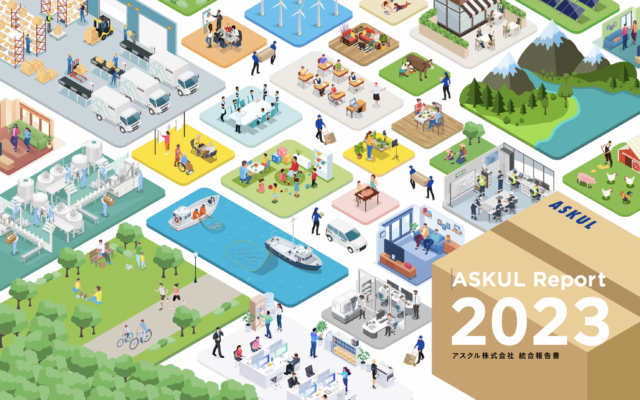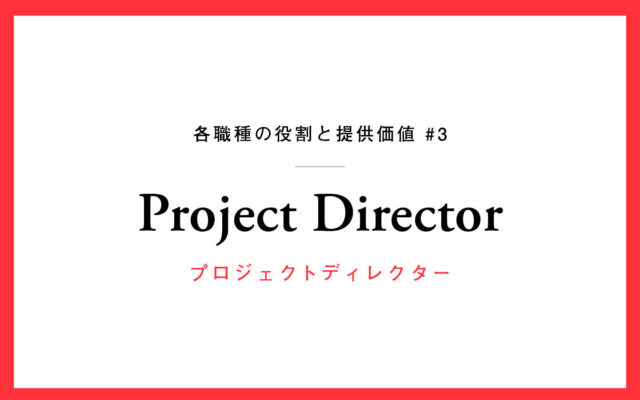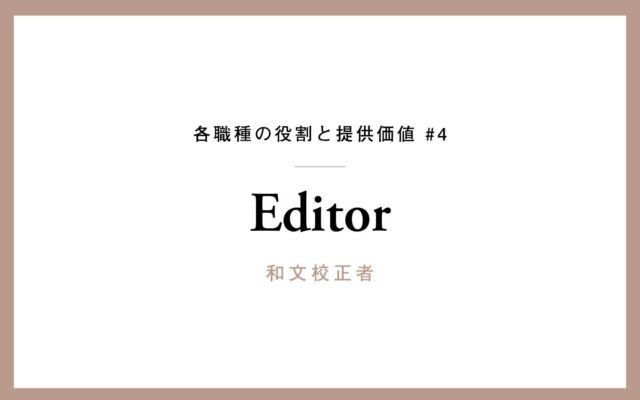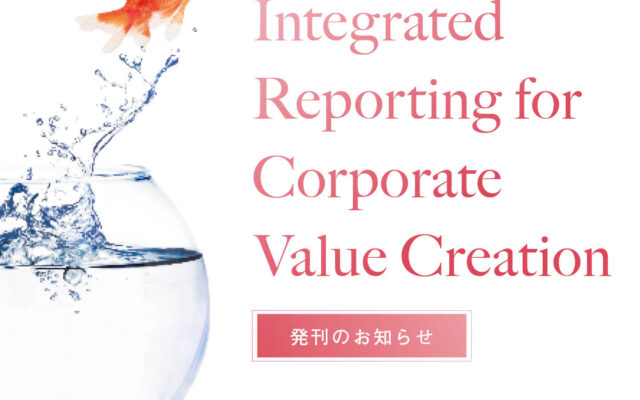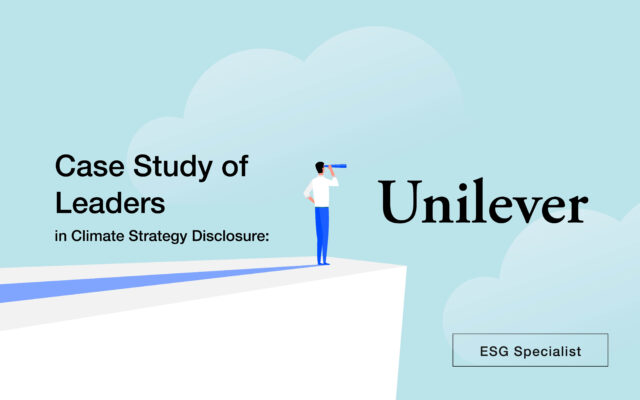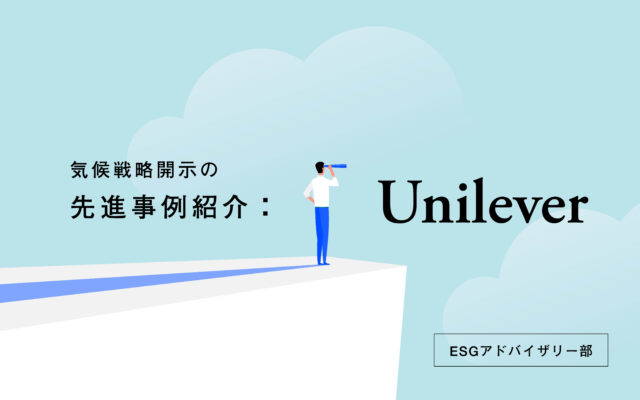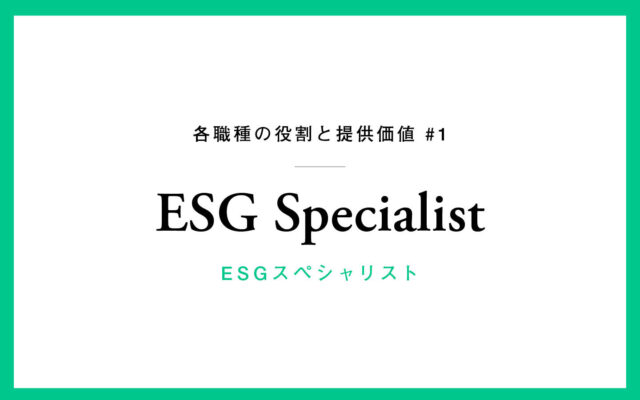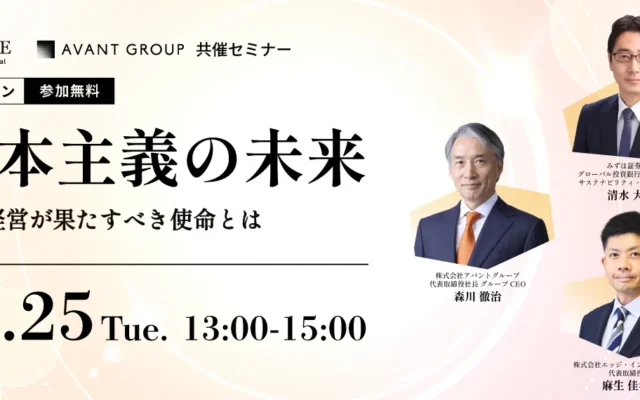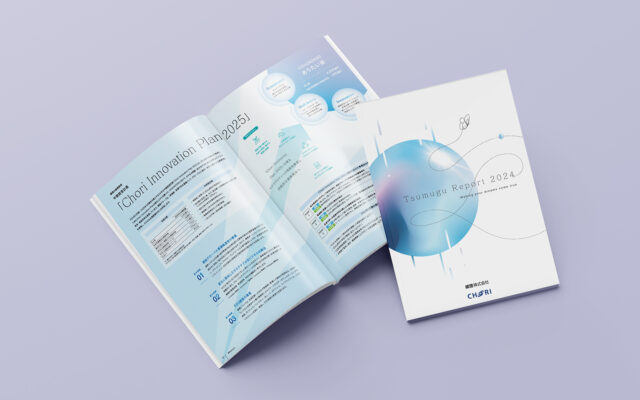Case Study of Leaders in Climate Strategy Disclosure: Unilever
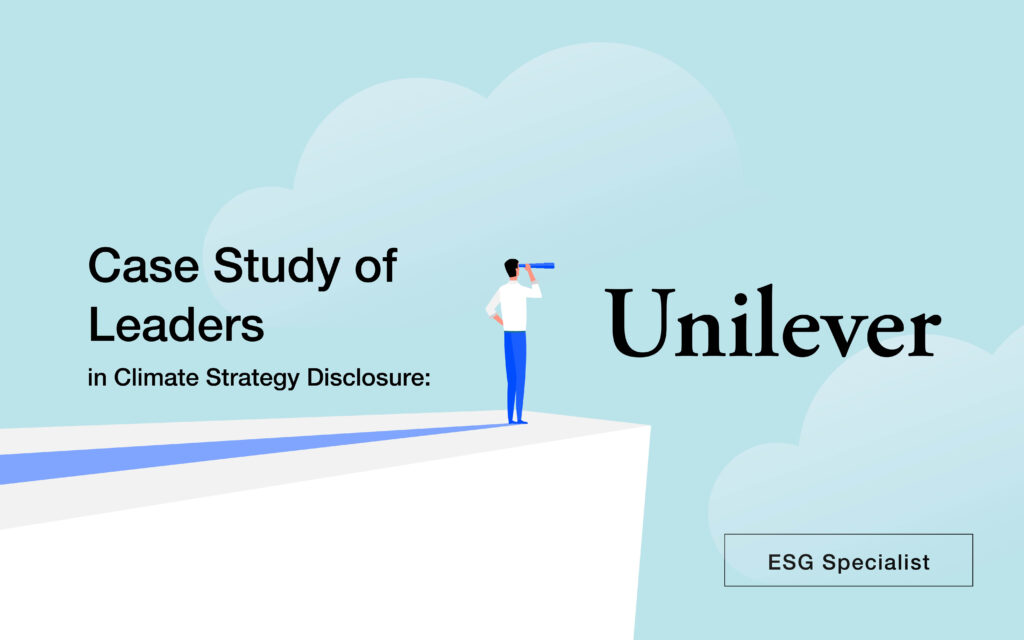
Globally, companies are seeing an increase in climate-related risks and business opportunities with each passing year. In response to the demand of stakeholders to make a strong commitment to address these changes, many companies have declared net zero goals.
However, it is difficult for companies to achieve net zero emissions with current technology, so it is not easy to disclose concrete transition plans. Despite this difficulty, there are companies working to develop investor-focused disclosures and communications.
This has led to a sizable gap between the percentage of companies that have disclosed lofty net zero goals and those that have a decarbonization strategy paired with short and medium-term targets, as pointed out in page 12 of Progress Update 2022, published by Climate Action 100+.
This article introduces Unilever as an example of a company that has taken a proactive and advanced approach toward resolving this issue.
Reference: Progress Update 2022, Climate Action 100+
■ Key Points
● Unilever communicates to investors its ambitious net zero goals alongside a clear thought process while facilitating two-way communication.
・Unilever’s commitment to achieving net zero emissions is embedded in its business strategy, Unilever Compass to Sustainable Growth, while details of its strategy to achieve its net zero goals are detailed in the Company’s Climate Transition Action Plan (CTAP).
・Unilever put CTAP before its shareholders at its May 2021 Annual General Meeting to obtain a non-binding advisory vote on the plan’s contents.
・Unilever believes that the economy-wide shift to net zero emissions will require a greater and deeper level of engagement between companies and their investors.
● Unilever reports on its progress to investors, offering highly usable data in a variety of mediums.
・Unilever reports annually on its progress regarding CTAP
・Unilever discloses climate-related information via the sustainability section of its website and its responses to the CDP questionnaire. Investors can access a user-friendly Excel spreadsheet with data detailing the Company’s performance, available in the sustainability section of the Company’s website.
・Sustainability information is also compiled on the IR section of Unilever’s corporate website to make this information more accessible to investors. This section also features a YouTube video presentation outlining the Company’s climate strategy.
■ Case Study: Unilever
Net Zero Roadmap and Reporting Case Study: Unilever
※Edge International has native English-speaking staff. The ESG Advisory Department occasionally provide information about reports from outside Japan. The following article is written in English.
Background
Unilever is a multinational consumer goods manufacturer. Its brands are available in 194 countries, including Japan (e. g., Dove, Vaseline, CIF). It believes that “doing business the right way drives superior performance” and describes itself as “purpose-led” and “future-fit”, communicating to investors thatthe company both delivers business results and manages risks to safeguard its future.
Purpose: “to make sustainable living commonplace”
Vision: “to deliver winning performance by being the global leader in sustainable business”
No of employees: 127,000 in around 100 countries
Turnover: 60.1 billion euros
Disclosure of Net Zero Commitment and Roadmap
Unilever’s most recent commitment to net zero emission of greenhouse gas (GHG) emissions, including CO2, is set out in its 2021 business strategy, Unilever Compass to Sustainable Growth, while its detailed plans for achieving its goals are set out in Climate Transition Action Plan (CTAP), which the company put to shareholders for approval at its 2021 AGM.
The company notes that its targets and actions are “designed to deliver an emissions reduction pathway consistent with the 1.5 ambition of the Paris Agreement” and that its “primary focus in the 2020s and 2030s will be on emissions reduction, not offsetting.”
Unilever committed to report on progress on CTAP each year in its annual report and accounts and did so for the first time in 2022. Unilever’s TCFD statement is also included in its annual report.
These materials are all available on Unilever’s website, either in the Climate action section of its Planet & Society hub aimed at the public, or in its Sustainability for investors hub, aimed at investors, which also features Unilever’s CDP return.
1. Unilever Compass to Sustainable Growth
Unilever launched this 15-year integrated corporate strategy in 2020, building on its previous 10-year strategy, Unilever Sustainable Living Plan (USLP).
The Compass sets out Unilever’s intention to “drive climate action to achieve to net zero” as one of its strategies for becoming (or remaining) a global leader in sustainable business, along with the specific net zero goals it is working to meet:
・Net zero emissions across its value chain by 2039
・Halve greenhouse gas impact of its products across the lifecycle by 2030
・Zero emissions in its operations by 2030
・Replace fossil-fuel derived carbon with renewable or recycled carbon in all its cleaning and laundry product formulations by 2030
・Share the carbon footprint of every product it sells
These goals fall under an overarching theme of “Improve the Health of the Planet” which also covers the topics of “Protect and regenerate nature” and “Waste-free world”. Although listed separately, many of the goals for these two topics also relate to and affect the company’s carbon and other GHG emissions (e.g., reducing food waste/use of virgin plastics).
2. Climate Transition Action Plan (CTAP)
Also launched in 2021, CTAP
・sets out Unilever’s climate strategy in detail
・defines its emission reduction and net zero goals, and
・sets out the actions it intends to take to meet them.
Addressed to its shareholders, Unilever put CTAP before them at its AGM to obtain a non-binding advisory vote on the targets and plans therein.
The plan prioritizes materiality, focusing on emissions reduction through Unilever’s operations, value chain, brands and products, and relationship with wider society.
It also sets out Unilever’s approach to governance, data, and disclosure, committing it to:
・Report annually on CTAP in the Unilever Annual Report and Accounts
・Submit “an updated plan for an advisory vote at the AGM every three years, noting any material changes” it has made or proposes to make
・Obtain external third-party assurance
・Link climate performance to executive compensation
・Continue to report in line with the TCFD framework
・Provide ongoing investor disclosure through CDP.
Importantly, Unilever places shareholder accountability front and center of its emissions reduction goal, stating:
“We know the economy-wide shift to net zero emissions will require a greater and deeper level of engagement between companies and their investors. In setting out our plan, we hope this increased level of transparency and accountability will strengthen this dialogue and encourage other companies to follow suit.”
3. Unilever Annual Report and Accounts
No specific mention of CTAP or net zero is made in the 2022 messages from the chairman or CEO, although the CEO does make the business case for the company’s sustainability agenda:
“On cost, while we often have to invest to drive the transition to a sustainable business, cost efficiencies are increasingly visible. Since 2008, we have avoided costs of around €1.5 billion from energy and water efficiency measures in our factories.”
The report, however, includes Unilever’s substantial first Climate Transition Action Plan (CTAP) Annual Progress Report, from pages 35–41.
The report also contains a detailed Task Force on Climate-related Financial Disclosures statement (pages 42–51), which covers governance and strategy and risk management relating to net zero, while metrics and targets are covered in the CTAP progress report (pages 35–41).
Emissions reduction is also covered in the “Non-financial performance” section of the report, which shows progress on Climate action targets (page 60), stakeholder engagement (page 63) a non-financial and sustainability information statement (page 64), data to meet the requirements of the UK government’s streamlined energy and carbon reporting (SECR) (page 65), a note on the WEF/IBC metrics used on pages 35 to 41 (page 65), and the climate change risks faced (page 69).
The first image displayed on Unilever’s homepage is of a wind turbine, clearly communicating the importance that this major global company places on decarbonization.
The website’s Planet & Society hub sets out how the company is “taking action on the issues that affect the world” through the Compass.
Planet & Society includes extensive sub-section dedicated to Climate Action, details Unilever’s pathway to achieving zero emissions in its operations by 2030 and net zero emissions across its value chain by 2039, as set out in CTAP.
The website also features a sustainability hub aimed at investors, which includes Climate action: a Unilever Briefing for Investors (2020/09/28), a YouTube video presentation outlining the company’s zero emissions targets and strategy.
The Sustainability Reporting Centre provides investors with Sustainability Performance Data. An excel spreadsheet detailing the company’s performance on its Climate Action targets from 2015 to 2022 is available for download.
5. CDP Return
Unilever publishes its completed CDP Climate Change Questionnaire return on its website, along with other sustainability returns and rankings. The questionnaire refers extensively to Unilever’s emissions reduction efforts through CTAP.
6. Task Force on Climate-related Financial Disclosures statement
Unilever publishes this information in its annual report and accounts (see pages 42–51).
Resources for Exploring Good Practice in Disclosure on Decarbonization
・FRC Thematic Review (examples of better practice TCFD-aligned disclosures)
・PWC Excellence in Climate Change Reporting 2022
・Fourth EY Global Climate Risk Barometer
・PWC Net Zero Economy Index 2022
・Net Zero Company Benchmark 2.0
————————————–
There are also companies in Japan working actively toward achieving decarbonization. An excellent presentation delivered in May 2023 at RI Japan 2023 introduced three outstanding examples of companies making such efforts.



